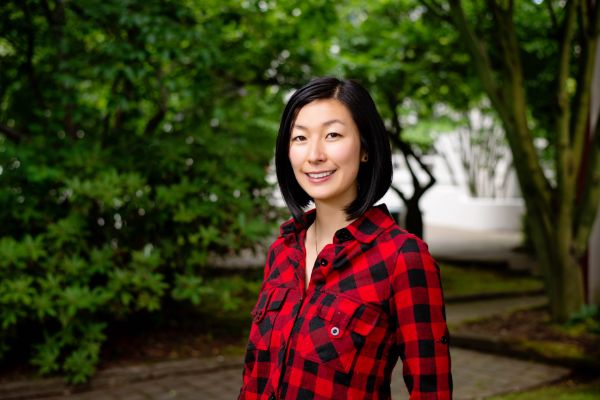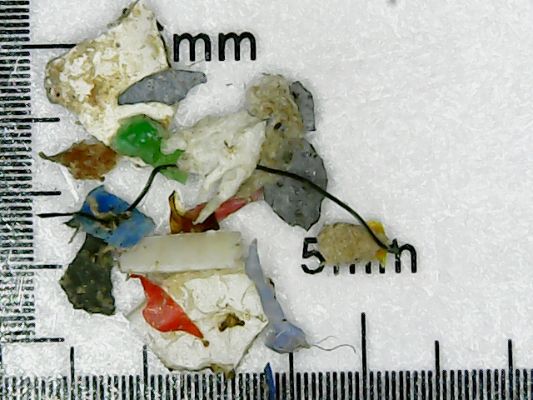SIT Research Proj Into Microplastics In Invercargill Waterways Recognised Nationally For Development
A Southern Institute of Technology (SIT) environmental research project on microplastics in Invercargill waterways has been recognised nationally for its potential to be rolled out across the country, and in the process, standardising the methods of data collection to quantify microplastic pollution. The outcome could achieve implementing strategies encouraging a reduction in, or mitigation of plastic pollution in NZ waterways.
The project has been chosen as one of three pilot projects across New Zealand Institute of Skills & Technology (NZIST) organisations, to receive concentrated support from the NZIST Research Directors, towards gaining external funding, after being submitted by Dr Christine Liang, Programme Manager for the School of Environmental Management at SIT . It was selected from 47 projects, submitted by researchers across all NZIST subsidiaries, spanning eight research categories covering sustainability and climate change projects.

The project was initiated in 2019, when Environmental Management third-year student Niamh Edginton, co-supervised by SIT School of Environmental Management tutors, Dr Anna Palliser and Dr Claudia Gonnelli, examined microplastic concentrations in Invercargill city waterways.
Microplastics by definition are very small pieces of plastic, less than 5mm in size, found in the environment as a result of the disposal and breakdown of consumer products and industrial waste. The study focused on two inner-city streams with the analysis finding 11 out of the 16 samples taken had the presence of microplastics.

Dr Liang is currently developing the project as a citizen science initiative using crowd-sourced data to quantify microplastics in waterways. She submitted the research project to NZIST for consideration in June with the following goal included in the proposal:
“The goal is to present a simple and standardised approach that can be easily applied by high school or tertiary students, empowering communities through environmental education and addressing the paucity (small amount) of nationwide data through citizen science”.
Citizen science utilises public participation and collaboration in scientific research (usually as unpaid volunteers) to increase scientific knowledge. In this case, the collaborative approach involves first steps with high school students. Dr Liang said they have started trialling the methods with SIT’s Trades Academy class that has students from local high schools.
“We want to involve primary school kids as well and I’m currently in contact with the Southland Community Nursery Education Coordinator to set this up for the future”.
With a strong focus on student engagement, they hope to achieve a greater amount of data collection, in turn, attaining a more comprehensive research outcome, in an area where it is acknowledged there is a lack of quantitative data in NZ.
She said the significance of the study is that at present, the majority of literature on plastic pollution is focused on the marine environment and only one study in NZ has quantified microplastics present in waterways, despite evidence suggesting rivers contain the highest concentrations of plastic pollution.
A further complication is the varying methodologies used in sample collection, quantification, and identification. The lack of standardisation in these areas makes it difficult to compare findings, she said.
Using tested methodologies from existing literature, Dr Liang said the project adapts and employs a straightforward, inexpensive, and accessible standard operating procedure (SOP) to sample microplastics in waterways. The SOP involves quick and easy sampling techniques, as well as equipment and chemicals that are generally available in a school chemistry laboratory.
“By first quantifying the state of microplastic concentrations in New Zealand waterways, measurable efforts can be implemented to reduce microplastic pollution and inform mitigation strategies”.
Dr Liang’s submission was successful and the NZIST Research Directors commented in their feedback, on the project’s suitability to be used extensively, remarking “on the potential for scaling nationally and for collaboration across the sector”. They also acknowledged Dr Liang’s good connections and partnerships with local stakeholders – councils, environmental agencies and iwi, endorsing her as well-qualified to progress the project in creating a model for nation-wide use.
Dr Liang says with the support of NZIST Research Directors they are hoping to secure funding from sources such as Unlocking Curious Minds (MBIE) or the Waste Minimisation Fund (Ministry for the Environment).
“The funding will enable us to run our citizen science programme with schools, community groups, and tertiary institutions beyond the region”.
Dr Liang said other potential positive outcomes include:
Utilising the merger of polytechnics and institutes of technology (NZIST) as an opportunity for collaboration of expertise on the project, but also to explore expanding the programme nationally through different NZIST hubs.
The partnership approach enables the possibility of schools sharing resources with more equipped institutions for the lab component of the SOP. It also facilitates dialogue around microplastics pollution, increasing awareness, while fostering a heightened sense of community.
And finally, the partnership between schools and NZIST institutes may also help promote an interest in science and environment-related programmes, guiding students into future tertiary study and careers in the sector.
Dr Liang, who is an established researcher in her own right, supervised a number of student projects in 2019 which went on to be recognised in a variety of forums. Among these, she was on the organising committee for the New Zealand Coastal Society (NZCS) national conference, held in Invercargill last November, and co-authored three papers submitted by students on SIT’s Bachelor of Environmental Management degree.
“My research background is very science-orientated, and I’m used to collecting quantitative environmental data. However, teaching has always been my passion, so to be able to integrate environmental education into my research is really fulfilling. It is also really rewarding helping to start a community effort that could potentially better our environment”.
Niamh Edginton, the student who initiated the research, is really excited about the project development, citing there’s still a country-wide lack of data on this form of pollution. “I am surprised that there is still minimal research being performed in New Zealand, and the idea of potentially using citizen science to monitor concentrations is a great thought”, she said.
Dr Liang said the microplastics project is such an exciting opportunity for herself and the Environmental Management department as well. Since the formation of NZIST and board of Research Directors is all very new, this is the first time a call for projects has been held. She added that to have work recognised and be part of a pilot programme, is gratifying to be one of the first projects to represent high-quality environmental research from the new institute.
“We are so stoked that this research could evolve into a nation-wide initiative someday”.


 New Zealand Association of Scientists: NZAS Supports Saving Biotechnology Capacity In Callaghan; Asks What Now For Applied Technology Group
New Zealand Association of Scientists: NZAS Supports Saving Biotechnology Capacity In Callaghan; Asks What Now For Applied Technology Group Stats NZ: Business Employment Data - December 2024 Quarter
Stats NZ: Business Employment Data - December 2024 Quarter Transpower: System Operator Launches Review Of Electricity Risk Forecasting Framework
Transpower: System Operator Launches Review Of Electricity Risk Forecasting Framework  The Conversation: NZ’s Glaciers Have Already Lost Nearly A Third Of Their Ice – As More Vanishes, Landscapes And Lives Change
The Conversation: NZ’s Glaciers Have Already Lost Nearly A Third Of Their Ice – As More Vanishes, Landscapes And Lives Change RBNZ: Reserve Bank Of New Zealand Welcomes The Release Of Te Ōhanga Māori 2023 Report
RBNZ: Reserve Bank Of New Zealand Welcomes The Release Of Te Ōhanga Māori 2023 Report Bill Bennett: Download Weekly - One NZ chooses Ericsson for core network update
Bill Bennett: Download Weekly - One NZ chooses Ericsson for core network update



